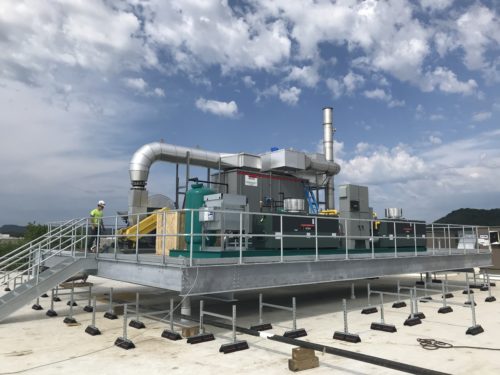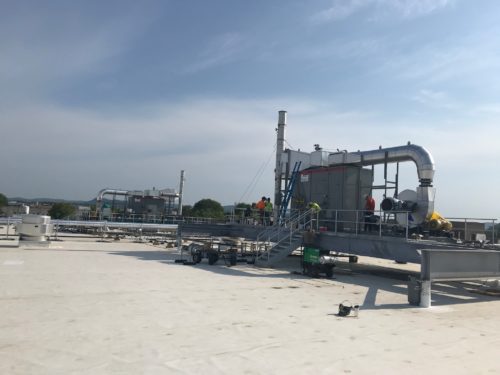The Challenge
Ready-to-eat meals, freshly baked goods, and essential groceries draw loyal customers to a chain of convenience stores; they just also happen to sell gasoline. The chain’s nutritious food is locally sourced, processed, and packaged for distribution to almost 1,000 stores in the United States. This company is uniquely positioned as vertically integrated, whereas much of the supply chain is owned by a single corporation serving a common market and customer segment.

One such vertical operation is a commercial bakery that supplies the company stores with fresh bread, bagels, buns, doughnuts, muffins, and snacks. It is a state-of-the-art facility focused not only on quality, but operational energy efficiency and a low carbon footprint. When the company decided to increase capacity, they took a wholistic approach to the design and layout. New bread and bun ovens were purchased along with proofers which are large enclosures kept at elevated temperatures to help dough rise. Most commercial bakery ovens and the corresponding proofers rely heavily on natural gas or electric elements to generate heat for baking the products.
While working with local regulators to satisfy air pollution control requirements for the new lines, company engineers explored the utilization of waste heat from pollution control systems. Oven exhaust contains Volatile Organic Compounds (VOCs) like ethanol, as well as odors that must be treated to comply with national emission standards.
Like many other industries, food processors often find that the best available control technologies for emission and odor abatement are thermal and catalytic oxidizers. Oxidation systems use time, temperature, and turbulence to break down pollutants into Carbon Dioxide (CO2), heat, and water vapor. This bakery was particularly focused on minimizing the CO2 output from the planned oxidizer installation by utilizing the heat from combustion. It would not only save operating costs, but also keep with the company’s commitment to do right by customers and the community.
The Solution
Anguil Environmental Systems was one of the first air pollution control system suppliers in the early 1990s to design and install oxidizers that met regulations limiting bakery oven emissions and odors. Three decades later, Anguil remains a leading supplier of both thermal and catalytic oxidizers to the baking industry. Regenerative Thermal Oxidizers, or RTOs, have been increasingly used on commercial ovens for their energy-efficiency operation. RTOs are typically 95% thermally efficient whereas catalytic oxidizers range from 60-80%. However, catalytic oxidizers are still widely applied at bakeries due to their lightweight construction which makes a rooftop installation more feasible, putting them near the ovens while eliminating costly duct runs.
This bakery was like many others in that regard; a roof installation made catalytic oxidation the most logical equipment selection. Two Anguil Model 50 (5,000 SCFM capacity) catalytic oxidizers would be installed, one for each oven, on dedicated roof platforms. During operation, ethanol-laden oven gases are pushed into a stainless-steel, shell-and-tube heat exchanger inside the oxidizers via a system fan. The contaminated airstream is progressively heated while traveling through the heat exchanger towards the combustion chamber. The cleanable, heat exchanger allows for self-sustaining operation with no auxiliary fuel usage at Lower Explosive Limits (LEL) levels of 8-12%. At the burner, the process gas is raised to the catalyst operating temperature. As the heated gas passes through the catalyst, an exothermic (heat releasing) reaction takes place as the pollutants are destroyed. The hot, purified air then passes through the opposite side of the internal heat exchanger and transfers thermal energy to preheat the incoming air.
This environmentally conscious bakery was interested in further reducing operating costs and energy consumption. Therefore, Anguil recommended and designed a secondary heat recovery system to capture additional waste heat from the two oxidizer stacks. Finned tube heat recovery coils with propylene glycol-heated fluid were installed to recover over 2.5 MMBtu/hr from the oxidizers and provide a heat source for the proofers.
The Result
The Anguil oxidizers achieve over 98% destruction efficiency of the ethanol emissions while reducing the carbon footprint of the bakery’s operations. The systems incorporate a self-cleaning ceramic filter, which prevents grease from plugging or fouling the catalyst. The Anguil design also ensured that the abatement devices would have no back pressure in the ductwork which could impact oven performance or product quality.



